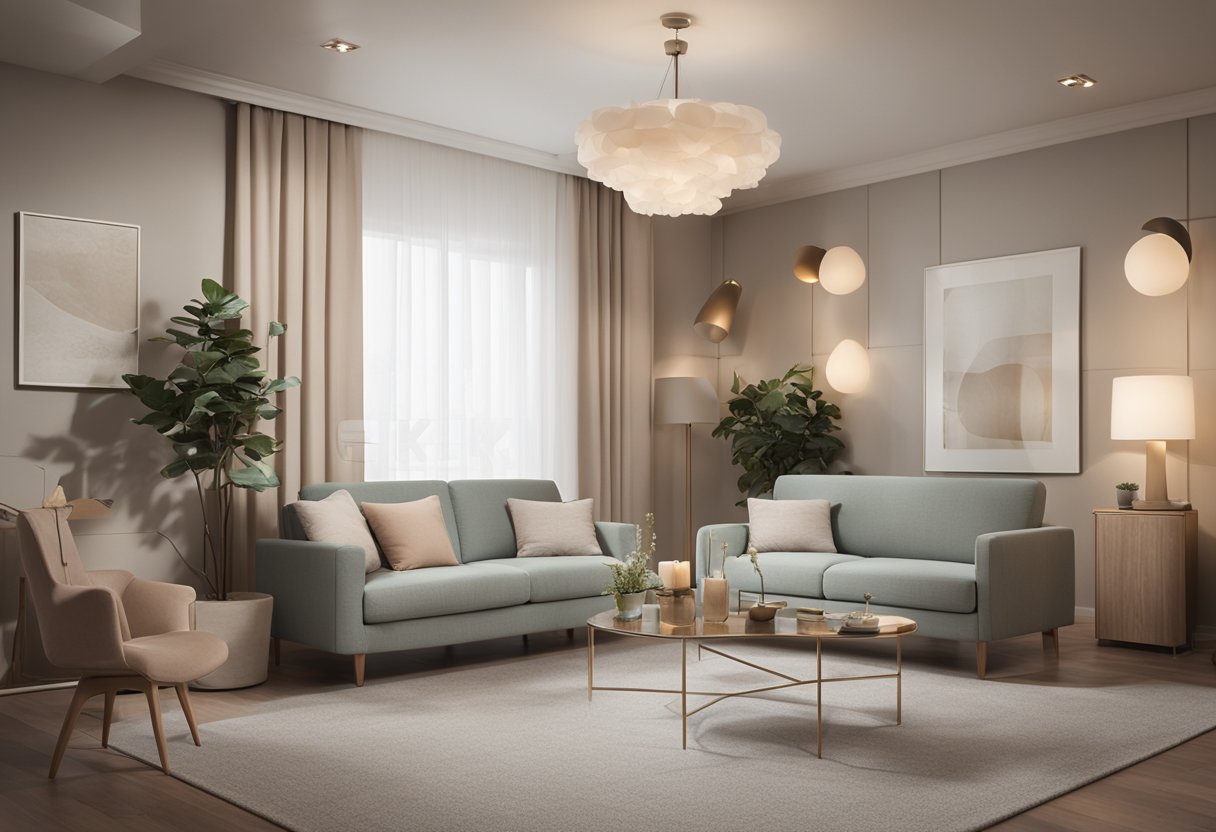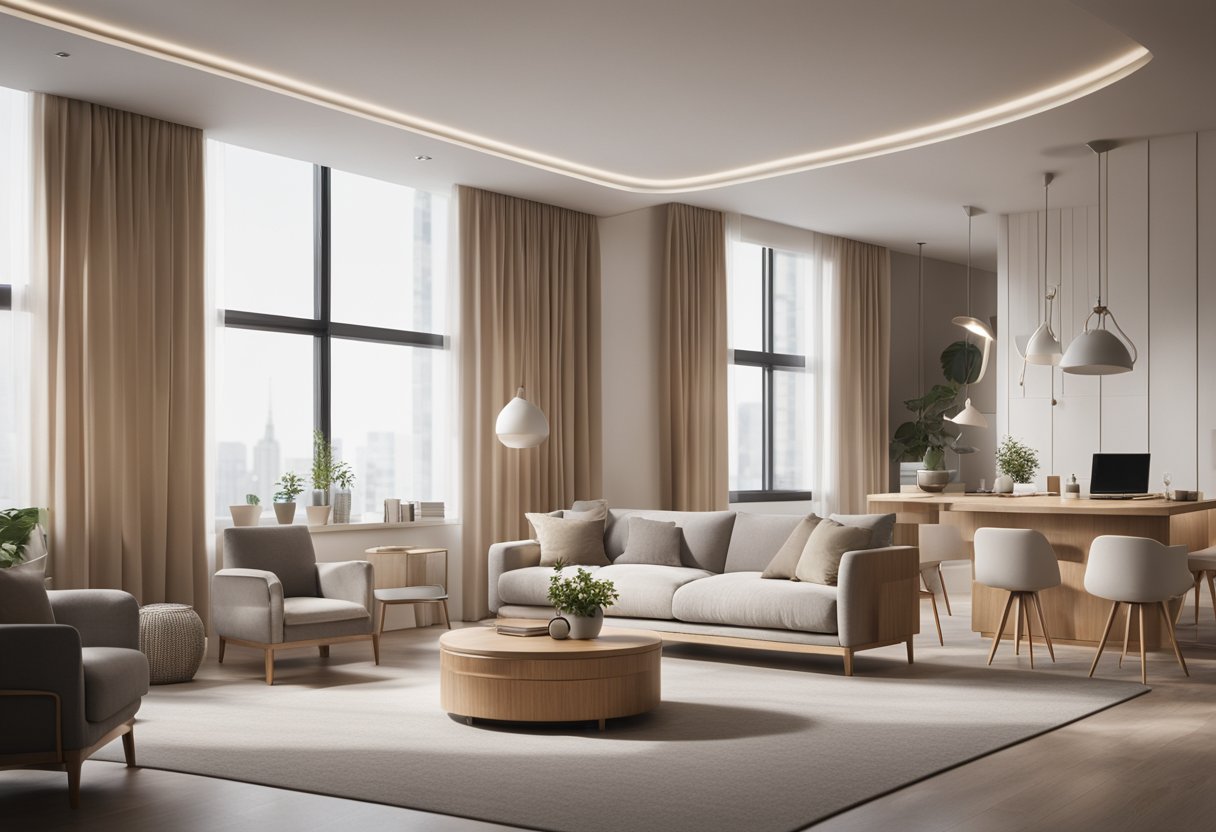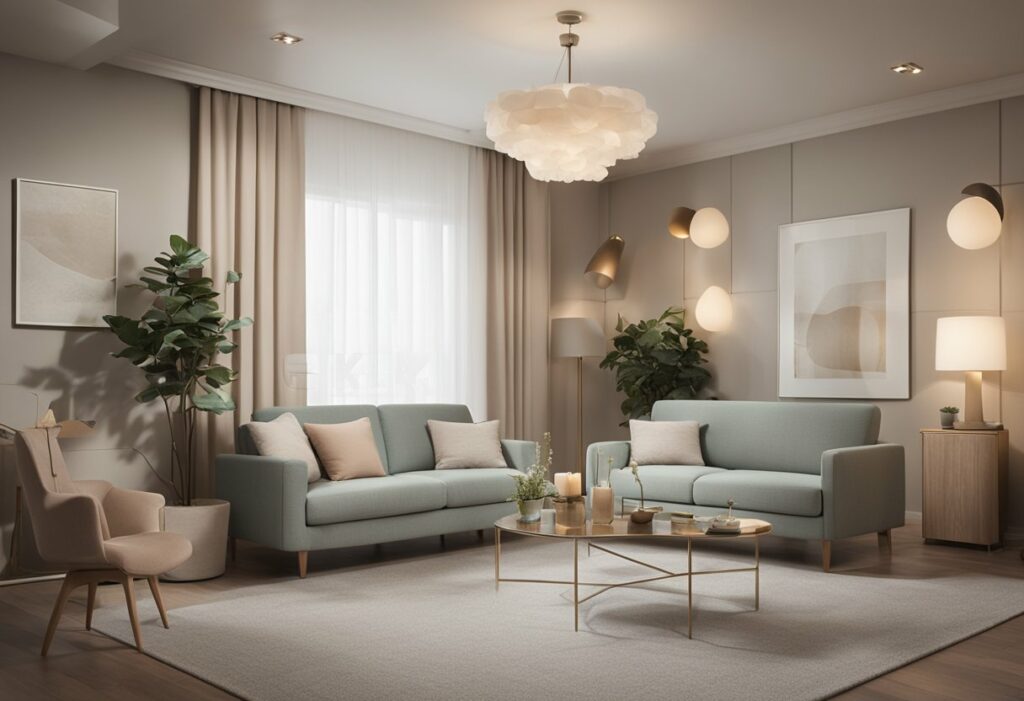Interior Design for Autism: Creating a Sensory-Friendly Home
If you have a child with autism, you know that creating a comfortable and safe environment for them is crucial for their well-being. Interior design plays a significant role in achieving this goal. Designing an autism-friendly space can help people with autism feel more comfortable and secure in their surroundings, which can improve their quality of life.

Interior design for autism is a specialized field that focuses on creating safe and supportive environments for people with autism. It takes into account sensory processing issues, which can cause people with autism to feel overwhelmed or uncomfortable in certain environments. An autism-friendly space is designed to minimize sensory overload and provide a calming atmosphere, which can help people with autism feel more at ease and improve their independence.
Collaboration and personalisation are key to creating an autism-friendly space. Every person with autism is unique, and their needs and preferences will vary. Working with an interior designer who has experience in designing for people with autism can help you create a personalized space that meets your child’s specific needs and preferences. With the right interior design, you can create a safe and comfortable environment that supports your child’s development and well-being.
Key Takeaways
- Interior design for autism is a specialized field that focuses on creating safe and supportive environments for people with autism.
- An autism-friendly space is designed to minimize sensory overload and provide a calming atmosphere, which can help people with autism feel more at ease and improve their independence.
- Collaboration and personalisation are key to creating an autism-friendly space.
Designing Autism-Friendly Spaces

Designing an autism-friendly space requires a deep understanding of the sensory needs of individuals on the spectrum. By creating a safe, comfortable, and inclusive environment, you can help individuals with autism feel more at ease and improve their quality of life. In this section, we will explore some key considerations for designing an autism-friendly space.
Understanding Autism and Sensory Needs
Individuals with autism often have sensory processing issues and sensitivities. This means that they may be more sensitive to certain stimuli, such as bright lights, loud noises, or certain textures. As such, it is important to design a space that takes these sensitivities into account. For example, you may want to incorporate dimmer switches or lamps with adjustable brightness to help manage lighting levels. You may also want to choose furniture and décor that is soft to the touch and free from sharp edges or corners.
Incorporating Safe and Comfortable Furniture
When choosing furniture for an autism-friendly space, it is important to consider safety and comfort. Soft, plush furniture can provide a comfortable and calming environment, while also helping to absorb sound and reduce noise levels. Additionally, furniture with storage options can help keep the space clean and organised, which can be helpful for individuals with autism who may struggle with sensory overload.
Utilising Natural Elements and Lighting
Incorporating natural elements and lighting can be beneficial for individuals with autism. Natural light can help improve mood and reduce stress levels, while also providing a calming environment. Additionally, incorporating natural elements such as plants or water features can help create a peaceful atmosphere.
Choosing Appropriate Colours and Textures
When choosing colours and textures for an autism-friendly space, it is important to consider the sensory needs of individuals on the spectrum. Bright, bold colours may be overwhelming, while soft, muted colours can provide a calming environment. Similarly, rough or scratchy textures may be uncomfortable, while soft, plush textures can be soothing.
Managing Acoustics and Noise Levels
Acoustics and noise levels are important considerations when designing an autism-friendly space. Loud or sudden noises can be overwhelming for individuals with autism, so it is important to manage noise levels and create a quiet environment. This can be achieved through the use of sound-absorbing materials, such as carpeting or rugs, as well as the use of soundproofing techniques.
By taking into account the sensory needs of individuals with autism, you can create a safe, comfortable, and inclusive environment that promotes sensory integration and cognitive development. With the right design elements, you can help individuals with autism feel more at ease and improve their quality of life.
Collaboration and Personalisation in Interior Design

Designing an interior space for someone with autism spectrum disorder requires collaboration between the designer, consultant, and the person with autism. By working together, you can create a space that meets individual needs and preferences.
Working with Designers and Consultants
Designers and consultants play a crucial role in creating an environment that is comfortable and supportive for people with autism. They can provide valuable insight into the design elements that can affect anxiety levels, independence, and sensory stimuli.
When working with a designer or consultant, it is important to communicate your specific needs and preferences. This includes discussing your sensitivities to fluorescent light, shades or blinds, glare, and heavy fabrics or drapes. It is also important to discuss any chemical imbalances or neural deficiencies that may affect your sensory processing.
Integrating Personal Preferences and Requirements
Personalisation is key when designing an interior space for someone with autism. This includes integrating personal preferences and requirements into the design. For example, some people with autism may benefit from pink noise or white noise to help reduce anxiety levels. Others may benefit from weighted blankets or other sensory tools.
It is also important to consider the individual’s independence when designing the space. This includes creating a space that is easy to navigate and has clear boundaries. By doing so, you can help promote independence and reduce anxiety levels.
Evaluating and Adjusting Designs Through Testing
Once the design is complete, it is important to evaluate its effectiveness. This includes testing the space with the individual and making any necessary adjustments. For example, you may need to adjust the lighting or acoustics to reduce sensory stimuli.
Testing the space can also help identify any areas that may need further attention. For example, people with dementia may benefit from a space that is calming and easy to navigate. By testing the space, you can identify any areas that may need improvement and make necessary adjustments.
In conclusion, designing an interior space for someone with autism requires collaboration, personalisation, and testing. By working together, you can create a space that is comfortable and supportive for the individual’s specific needs and preferences.
Frequently Asked Questions

How can we create a sensory-friendly living space for individuals with autism?
Creating a sensory-friendly living space for individuals with autism involves designing an environment that is calming and comfortable. Start by reducing clutter and visual distractions. Soft, muted colours and natural materials can help create a calming atmosphere. Consider adding sensory elements such as weighted blankets, fidget toys, or soft lighting to help individuals with autism feel more at ease.
What are the key elements of an autism-friendly bedroom design?
An autism-friendly bedroom design should prioritise safety, comfort and sensory input. Consider using blackout curtains to block out light, as well as noise-reducing curtains to block out sound. A weighted blanket or compression sheet can provide comfort and a sense of security. Sensory-friendly lighting, such as dimmer switches or night lights, can help create a calming environment.
In what ways can we adapt home lighting to be more comfortable for autistic occupants?
Autistic individuals can be sensitive to bright or flickering lights. Consider using soft, warm lighting with dimmer switches to create a calming atmosphere. Avoid fluorescent lighting, which can be harsh and overstimulating. Natural light is also important, so try to maximise the amount of natural light in your home.
What considerations are important for choosing colours and patterns in a home for someone with autism?
When choosing colours and patterns in a home for someone with autism, it is important to consider the sensory impact of the design. Bright, bold colours and busy patterns can be overwhelming for autistic individuals. Instead, opt for muted, soft colours and simple patterns. Neutral colours such as beige, grey, or pale blue can create a calming atmosphere.
How can we design an autism-friendly garden or outdoor space?
An autism-friendly garden or outdoor space should be safe, calming and sensory-friendly. Consider adding a sensory garden with plants that have interesting textures and smells, such as lavender or rosemary. A quiet area with a bench or swing can provide a calming space for relaxation. Sensory-friendly lighting can also be used outdoors to create a calming environment.
What are effective strategies for creating calm and structured environments in the home for adults with autism?
Creating a calm and structured environment for adults with autism involves creating a routine and providing clear boundaries. Use visual schedules and checklists to help individuals with autism understand what is expected of them. Provide a designated space for work or study, and ensure that the space is free from distractions. Consider using noise-cancelling headphones or earplugs to reduce sensory overload.



